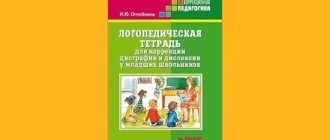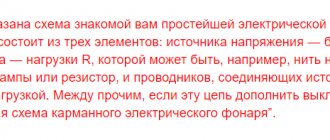Rate of speech is a sign of speech function, which facilitates the perception of heard information by others. Changes in speech rate include slowing down, speeding up, and stuttering. An incorrect speech rate can impede the development and learning of children, reduce the quality of life, and worsen a person’s social adaptation. Patients with accelerated, slow speech or stuttering require mandatory correction of speech defects. For children, therapy is prescribed as early as possible to prevent developmental delays.
Types of speech rhythm and tempo disorders
Not only a speech therapist, but also parents and teachers can hear that a child’s speech deviates from the normal pace and the rhythm is disturbed, but only a specialist can determine the structure and cause of the defect.
Violations of the tempo and rhythm of speech include:
- Tahilalia is the accelerated pronunciation of words, sounds, syllables at a speed of 20-30 sounds per second (instead of 9-14 normally). The rapidity of speech negatively affects the articulation of sounds. Pathology occurs in childhood, becomes established during adolescence, and can remain with a person for life.
- Bradylalia is a pathologically slow speech, most often found in children with mental retardation or mental retardation, since violations of basic mental processes (memory, attention, thinking) and fine motor skills are often observed in parallel with bradylalia.
- Stumbling - against the background of accelerated speech, repetition of words, syllables and sounds occurs. It must be distinguished from stuttering, since stumbling does not have convulsions of the speech apparatus in its etiology; a child or adult with stumbling does not experience fear of speaking.
- Stuttering - during a statement, involuntary stops occur that are beyond the control of the stutterer. They are accompanied by convulsions of all parts of the speech apparatus.
SPEECH RHYTHM AND STRUCTURE OF LANGUAGE
Published in 2016, Issue July 2016, PHILOLOGY | No comments yet
Chizhova V.A.1, Koroleva I.A.2
1Candidate of Philological Sciences, Associate Professor, 2Candidate of Philological Sciences, Associate Professor, Volgograd State Social and Pedagogical University
SPEECH RHYTHM AND STRUCTURE OF LANGUAGE
annotation
Mastering foreign language speech at different levels is complicated by the psychophysiological characteristics of the native language. Within the framework of the psycholinguistic approach, the article takes a new look at the phenomenon of speech rhythm and its influence on speech acquisition. Communicative competence, as the main task of mastering any foreign language, can be associated with bodily motor skills, understanding of rhythmic interval and autorhythm in spoken speech.
Key words : autorhythmia, rhythm, rhythmic interval.
Chizova VA1, Koroleva IA2
1PhD in Philology, 2PhD in Philology, Volgograd State Pedagogical University
SPEECH RHYTHM AND STRUCTURE LANGUAGE
Abstract
Mastering at different levels of foreign language speech difficult psihofi-physiologically features of native language. As part of the psycholinguistic approach in an article on a new phenomenon is considered speech rate and its impact on language acquisition. Communicative competence as the main task of mastering any foreign language, may be associated with bodily motility.
Keywords : autoritmiya, rhythm, rhythm interval.
One of the most important tasks of modern psycholinguistics is the creation of a reasoned theory of language acquisition. According to the American psycholinguist D. Slobin, numerous studies in this area are characterized by the desire to “establish the universality of this process and the existence of innate biological factors that determine this universality” [5, 107]. Numerous studies of children's speech did not answer the question about the essence of these factors, but forced linguists to turn to data from other sciences - neurophysiology and ethology.
Neurophysiological studies of speech and speech pathologies have posed a number of particular problems for linguists, among which the following are considered the most pressing: the interaction of speech and motor centers, the transition from a sympractic context to a sensemantic one, and their interaction in the process of speech communication.
Understanding speech activity as one of the types of human activity in general naturally led researchers to search for the “trigger mechanism” of this activity. Such a mechanism is probably autorhythmia, interpreted as the basis of many instinctive or unconditional actions of all living organisms [1, 18].
For linguists, the phenomenon of autorhythmia means the relevance of studying speech rhythm in connection with bodily motor skills. Such studies can become the basis for studying the interaction of consciousness and subconsciousness in the process of language acquisition. At the level of pragmatics, this is the interaction of understanding and feeling. At the same time, the traditional understanding of speech rhythm needs significant revision. In the dictionary of linguistic terms D.E. Rosenthal and M.A. Telenkova, the interpretation of speech rhythm is included in the article “intonation,” which naturally reflects the inextricable connection between rhythm and melody. However, a significant drawback in the interpretation of rhythm, probably borrowed from music theory, is its linear understanding, in the form of a horizontal line, i.e. as “alternation of stressed and unstressed, long and short syllables” [4, 134]. Here the issue of the “vertical” ratio of stressed (strong) and unstressed (weak) syllables is clearly ignored, which is due to the lack of a way to measure such a ratio. Vertically present in the description of a musical melodic interval as the ratio of sounds in height. In linguistics, the melodic interval is taken into account very superficially - at the level of lowering or raising the tone. A detailed description of speech melodic intervals, the variety of which depends not only on the logic of the utterance, but also on its emotional coloring, as well as a description of the ratio of strong and weak syllables, which we call the “rhythmic interval,” can become the basis for understanding the peculiarities of the functioning of speech memory. The rhythmic interval is the ratio of the weak and strong beats of a rhythmic figure, consisting of two phases (beats) - tension and relaxation.
The linear interpretation of many linguistic phenomena may be due to the dominance of written language as the most accessible source of knowledge about language. The mental dominance of visual perception of the surrounding reality as the most reliable and accurate is also not excluded. However, relative reliability applies to all sensory mechanisms of perception, including auditory, which is undoubtedly reflected in language. In this regard, the question arises about the degree of reliability of expressions such as “sunrise” and “sunset”. In general, the influence of sensory on language is a poorly studied phenomenon.
In studies of children's speech, the main attention was paid to the development of conceptual and logical thinking in connection with the development of speech. The sensory perception of furnishings was partially taken into account, for example, when identifying features of color and shape as the basis for classifying objects. There are also cases of the influence of tactile perception on the peculiar children's “categorization” of objective, more precisely diffuse or syncretic concepts, and the influence of taste indicators on the assimilation of verbal signs [1, 20-21]. Some confusion is caused by the selection of I.N. Gorelov described two successive stages in the development of a child’s speech, the first of which is sensory speech, contrasted with the later motor speech. In this case, sensory speech is interpreted as understanding [1, 22], which demonstrates a violation of cause-and-effect relationships. More correct, in our opinion, is the interpretation of sensory as a way or means of perceiving external signals and understanding as a result of this perception. We believe that the first stage is the stage of sensory orientation in typical situations under the influence of various signals, including speech. Motor speech, in turn, is the result of the interaction of sensory and motor skills.
Bodily motor skills in its explicit manifestation are understood by us as a set or system of muscle movements that ensure speech breathing. A broader and deeper understanding of bodily motor skills, based on the assumption of the presence of latent movements accompanying sensory perception, returns us to the phenomenon of autorhythmia as the basis of unconditioned reflexes.
The conditioned reflex nature of oral speech does not currently raise any significant objections, but requires significant clarification. One of these clarifications involves the relative distinction between speech form and speech content as separate objects of scientific research. However, the ultimate goal of such research should be to understand the relationship and interaction of speech form and content, demonstrating the relationship between reflexivity and heuristic speech or, in another interpretation, the relationship between consciousness and subconscious, as well as the systemic functioning of human thinking and its reflection in speech.
The relative distinction between speech form and speech content or meaning of an utterance is very significant when learning a foreign language by adults, since inadequate perception of form prevents adequate perception of content and excessive dominance of form over content in the mind of the student.
For a long time, the main cause of errors of various types in foreign language speech remained the so-called interference, which A.A. Zalevskaya interprets it as the transfer of existing skills acquired during mastery of the native language to the formation of new skills characteristic of a foreign language [2, 294]. However, according to the same A.A. Zalevskaya’s such a one-sided understanding of interference is contradicted by cases of its avoidance [2, 295].
It is possible that one of the reasons for errors is precisely excessive attention to form, due both to the peculiarities of the thinking of adults and to incorrect methods of teaching a foreign language.
To master the sound form of foreign language sounding speech, very dubious methods of staging pronunciation are still used, focused primarily on the placement of consonants, and based on a description of their articulation, which contradicts the reflexivity of speech sound production. It is quite obvious that neither the tongue nor the facial muscles obey volitional orders such as “speak Russian” or “speak English” due to the stable articulation characteristic of native speech. This implies the need for temporary neutralization of already formed pronunciation reflexes. However, the problem of pronunciation is not paramount, since the adequacy of pronunciation directly depends on the adequacy of the perception of foreign language sounds by ear.
To form a unified theory of mastering a second foreign language, we consider it appropriate to distinguish, first of all, six stages in the process of mastering the sound form of the language being studied:
- Getting used to foreign sounds;
- Identification of foreign language sounds and sounds of native speech;
- Identifying and defining differences;
- Emphasizing strong vowels;
- Distinguishing between strong and weak syllables;
- Highlighting familiar words.
This classification is, in essence, a program of experimental research in the field of perception and reproduction of foreign language sounds and the sound form of speech in general. The basis of such studies is the hypothesis about the structuring function of the rhythmic interval, which is considered not only as the ratio of the stages of strong and weak syllables, but also as the ratio of muscle tension and relaxation, as well as the associated rhythm of speech breathing.
Another unresolved problem is the problem of mastering foreign language grammar. At this level, it is only absolutely clear that the conscious conceptual and logical assimilation of grammatical rules does not at all ensure their adequate use in spontaneous speech, since such assimilation provides knowledge about the language, but not the language itself.
Attempts to solve this problem have been made, in particular, within the framework of the psychological theory of learning in relation to the development of child speech. A convincing critical analysis of the main provisions of this theory is found in D. Slobin, who proves the inconsistency of reinforcement and imitation methods [5, 9-14]. The result of this analysis was a very pessimistic conclusion: “Psychological theories that deal only with the superficial characteristics of statements have too weak an apparatus to explain the main factors in the process of processing linguistic information. An adequate theory of language acquisition has not yet been created" [5, 114-115]. Also noteworthy is the following remark “about important debates between the theory of learning and the psychology of cognitive processes regarding the role of innate and acquired factors in language development” [5, 115]. The mere mention of the possibility of the existence of innate mechanisms of speech again returns us to autorhythmia and, probably, the speech rhythm generated by it, as one of the final stages of the development of a unified rhythmic system, ensuring the vital activity of the human body.
It can be assumed that the organization of the lexical system is also based on the rhythmic interval, if we consider antonyms as the ratio of the strong and weak phases, and synonymy as a fragmentation of this ratio. In grammar, a similar relationship is demonstrated by degrees of comparison of adjectives and aspectual pairs of verbs
These examples also show that the main operation of thinking in the process of cognition of the surrounding reality is the operation of comparison, accompanied, as a rule, by evaluation. It is clear that both comparison and evaluation are subject to gradation, which is subject to certain thinking algorithms.
Literature
- Gorelov I.N. Selected works on psycholinguistics. – M.: Labyrinth, 2003. – 320 p.
- Zalevskaya A.A. Introduction to psycholinguistics. – M.: Russian State University for the Humanities, 1999. – 382 p.
- Luria A.R. Language and consciousness. Edited by E.D. Chomsky. – Publishing house Moskovsk. University, 1979. – 320 p.
- Rosenthal D.E. and Telenkova M.A. Dictionary – reference book of linguistic terms. Manual for teachers. Edition 2 rev. and additional M.: “Enlightenment”, 1976. – 343 p.
- Slobin D., Green J. Psycholinguistics (translation from English by E.I. Negnevitskaya). Under the general editorship of A.A. Leontyev. – M.: “Progress”, 1976. – 348 p.
References
- IN Gorelov Selected works on psycholinguistics. – M.: Maze, 2003. – 320 p.
- Zalevskaya AA Introduction to psycholinguistics. – M.: Russian State Humanitarian University, 1999. – 382s.
- AR Luria Language and consciousness. Edited by ED Chomsky. – Publishing house Moscow. University Press, 1979. – 320C.
- DE Rosenthal and Telenkova MA Glossary – a guide of linguistic terms. Handbook for teachers. Izd.2 th Corr. and ext. M.: “Enlightenment”, 1976. – 343s.
- Slobin D., J. Green. Psycholinguistics (translated from English Negnevitskoy EI). Edited by A.A. Leontief. – M.: “Progress”, 1976. – 348s.
Symptoms of speech tempo and rhythm disorders
With tachylalia (accelerated speech rate), the rapid flow of utterance stuns the interlocutor, whom the speaker practically does not listen to the end of, and often interrupts. The articulatory apparatus does not have time to clearly pronounce sounds, syllables and words; the entire utterance is pronounced in one exhalation, without respite. Tachylalia may be accompanied by twitching of the body or separately of the arms and legs, and grimacing.
Stumbling is distinguished, in addition to the frequent repetition of speech units, by unjustified pauses in speech, stops in the middle of a speech utterance. Unlike stuttering when stumbling, a child’s speech does not deteriorate in front of an unfamiliar audience and does not have periodicity.
With bradylalia , the articulation of sounds is sluggish and unclear, vowel sounds are pronounced stretched out. The voice is monotonous, the statements are not emotionally colored, they lack characteristic modulations. Speech is so slow that it causes impatience and irritation among others.
Children, seeing such an attitude, try to remain silent more often than to speak. This position further retards their mental development. According to scientific research, with bradylalia, not only external, but also internal speech has a slow pace.
Stuttering has a wide clinical picture. It is characterized by the following symptoms:
- Convulsions of all parts of the articulatory apparatus.
- Accompanying movements of the muscles of the face, neck, arms and legs - squinting, stomping, clenching fists, frequent blinking.
- Speech tricks - all kinds of “uh”, “well”. “so”, “here”, etc.
- Fear of speech, fear of pronouncing individual sounds and words.
- Increased stuttering when communicating with unfamiliar people.
Throat singing – train your tempo in an original way
Voice intonation, speech rate and timbre are perfectly trained with the help of throat singing. To understand what it is, listen to Mongolian folk songs or play any rock composition in the “hardcore” or “deathmetal” genre. If your throat starts to hurt during exercise, you are doing everything right. The tempo of speech and voice after throat singing decreases for 10-20 minutes and returns to its original state when the ligaments recover from the temporary load. If you practice such training daily for 10-15 minutes, you can notice significant improvements within a week. Throat singing helps control intonation, rate of speech and reduces the timbre of the voice by 0.5-1 octave.
Train regularly, don’t skip any of the three exercises, and within a month others will tell you about the changes in your voice. The main thing is perseverance, patience and methodicality.
Examination of children with violations of the tempo and rhythm of speech
If parents suspect that their child has disturbances in the tempo and rhythm of speech, they should consult with a speech therapist at a children's clinic, speech center, school or kindergarten. Sometimes you can hear the erroneous opinion that you should not start correcting speech deficiencies until the child is 5 years old.
This is partly true for uncomplicated cases of sound pronunciation formation, since the speech apparatus has not yet been formed, and sounds can appear on their own. In all other cases, the sooner correction work begins, the more successful it will be.
At the initial visit, the specialist is required to conduct a speech therapy examination. The main directions of this survey:
- Establishing the cause and nature of speech impairment.
- Determining the rate of speech of the child and his parents.
- Diagnosis of basic mental processes (memory, attention, thinking).
- Studying the history of speech development - the appearance of the first words, phrases, the likelihood of parents forcing the child’s speech. Bilingualism in the family.
- Determining the style of family education, attitude towards the child, the presence of conflicts, difficult life situations.
- Collecting anamnesis of the disorder and concomitant pathologies.
- Determination of existing articulation deficiencies.
- Correspondence of the level of speech development of the child to the age norm.
Perhaps some questions may seem unnecessary to parents, but the speech therapist does not ask them out of idle curiosity - there are no trifles in the development and correction of speech disorders, the situation in the family and the presence of psychological problems are very important.
Therapeutic measures
Treatment measures include eliminating the causes of speech dysfunction, as well as corrective work. If a child has a pathology that has caused a change in speech, he is first prescribed a course of treatment. Upon completion of therapy for the underlying disease, the patient is referred to a speech therapist. The speech therapist draws up a plan for speech therapy sessions. Correction is carried out both at home and in educational institutions. The number of classes is determined by the severity of speech disorders.
For bradyllalia, speech therapy classes are aimed at developing a faster pace of conversation and training the articulatory and motor apparatus. The speech therapist teaches the child to write, read, and clearly pronounce phrases and sentences faster. The classes train memory and attention. Outdoor games, skits, and dialogues are actively used, which help accelerate the pace of speech function. A good effect from the correction can be expected after 4 weeks. During a monthly course of therapy, speech speed becomes faster and pronunciation becomes clearer.
Children with slow speech need to conduct independent studies at home and control their conversation.
When treating tachylalia, a speech therapist conducts classes that include breathing training (slow, even), reading, and orderly, calm speech. The specialist teaches the child to work with a team, organizing performances in front of a group of people or children. During classes, they must develop general, auditory attention and train diction. The course of treatment for preschoolers and primary school students is 6-12 months.
It is better to correct tachylalia as early as possible (before 5 years of age), since therapy is less effective during puberty.
Stuttering correction is carried out at home and in the speech therapist's office. Family members need to avoid conflict and speak slowly and clearly. During treatment, it is better to refrain from visiting kindergarten for 2 months, events, and holidays, so as not to excite the patient. The correction course includes physical activity (running, swimming, cycling). During classes, you need to practice counting (count clothespins by attaching them to paper cut out in the shape of a circle), and use silent games. For correction, tongue twisters, gymnastics for the articulation apparatus, and breathing exercises are used.
Causes of speech pathologies
The basis for disturbances in the tempo and rhythm of speech is an incorrect relationship between the processes of excitation and inhibition in the cerebral cortex.
The causes of tachylalia (accelerated speech rate) are:
- The predominance of excitation processes in the cerebral cortex, responsible for the formation of speech.
- Heredity, congenital characteristics of temperament.
- Imitating the fast-talking of others, mistakes in education - such speech is most often found in unbalanced and excitable children.
The causes of bradyllalia (slow speech) can be:
- Dominance of inhibition over excitation in the speech areas of the cerebral cortex.
- This feature of external and internal speech can be inherited.
- Pathology appears as a result of a child’s imitation of incorrect speech patterns from others.
Causes of stuttering can be:
- Unbearable speech load (learning large poems, memorizing texts that are not age appropriate, memorizing difficult and obscure words).
- Frequent punishment of children, sudden and severe fear, mental trauma due to improper upbringing.
- Excessively accelerated speech due to imitation of family members, getting stuck on individual sounds during speech;
- Traumatic brain injuries, neuroinfections.
The main factors provoking pathology of speech development are congenital or acquired weakness of the nervous system and a decrease in its stability.
Diagnostic measures
Diagnosis of speech dysfunction (tachylalia, bradylalia, stuttering) includes identifying the cause of the disease. The child is referred to a neurologist. The neurologist conducts an examination, collects anamnestic data (speech function of relatives, pathologies of pregnancy and childbirth), prescribes an examination (electroencephalogram, magnetic resonance imaging, ultrasound examination of blood vessels and other techniques). If there are mental traumas that contribute to the occurrence of stuttering, the patient is referred to a psychologist. After the examination is completed, a speech therapist works with the child by specialized specialists.
The speech therapist also collects anamnestic data on the speech characteristics of relatives, looks at the examination results, and conducts a speech therapy study. The specialist determines the state of the child’s motor activity (general, speech), evaluates speech function (quality of pronunciation of sounds), rate of speech: fast, slow, stuttering. It is also important for a speech therapist to know the state of the articulatory apparatus and facial muscles. If the child can write and read, the specialist assesses the state of writing and reading (speed, correctness of words, presence of pauses in sentences, presence of stuttering, hesitation during reading, speed and correctness of writing words and sentences). At the end of the examination, the speech therapist draws up a speech therapy report.
What should parents do if their child has a speech disorder?
You should not try to correct this pathology through prohibitions and shouts like “Come on, stop making faces, speak correctly now.” Since these disorders are closely related to the state of the nervous system, you should try to create a calm atmosphere in the family, try to adjust communication with the child, and establish a trusting relationship.
Correction of speech disorders should be carried out by a qualified speech therapist. It is advisable to consult with a neurologist, psychotherapist, or psychologist who works with children with developmental disabilities before starting classes. You will have to be prepared for the fact that the cycle of correctional classes will be long - several months, perhaps several years.
If there are people in the family with speech impairments, you need to work on correcting it. It is advisable for the child to hear calm, quiet speech around him at a leisurely pace for imitation. It is necessary to celebrate any, even the smallest, successes of the child, convince him that the defect can be overcome, and encourage him.
To strengthen the child’s nervous system, it is advisable to carry out general strengthening measures:
- Hardening.
- Doing feasible sports.
- Taking vitamin complexes, a large amount of fresh vegetables and fruits in the diet.
- Maintaining a daily routine.
- Optimization of teaching load.
- As recommended by your doctor, take antipsychotics.
Compliance with such recommendations will lead to the correction of speech disorders.
A little about rhythm:
Remember military marches, anthems, brave soldiers' songs - they all have a clear and harmonious rhythm. Now remember how gently your mother sang a lullaby as a child, how gently your grandmother told a fairy tale. In this case, speech becomes melodic, and the rhythm of speech disappears.
Why is this so? Physiologically, our brain and entire body are tuned to the following: as soon as the rhythm frequency increases, the entire nervous system is excited and the psyche becomes toned. The brain works the same way; when we calm down, the frequency characteristics drop, and we fall asleep. When excited, they increase and the person begins to take active actions.
Therefore, in dancing they adhere to the same model: cheerful and solemn music is written with an increased tempo, and sad or gentle music with a decreased one, one awakens activity, the other reduces it.
Watch an excerpt from the musical “Chicago” and judge for yourself)))







